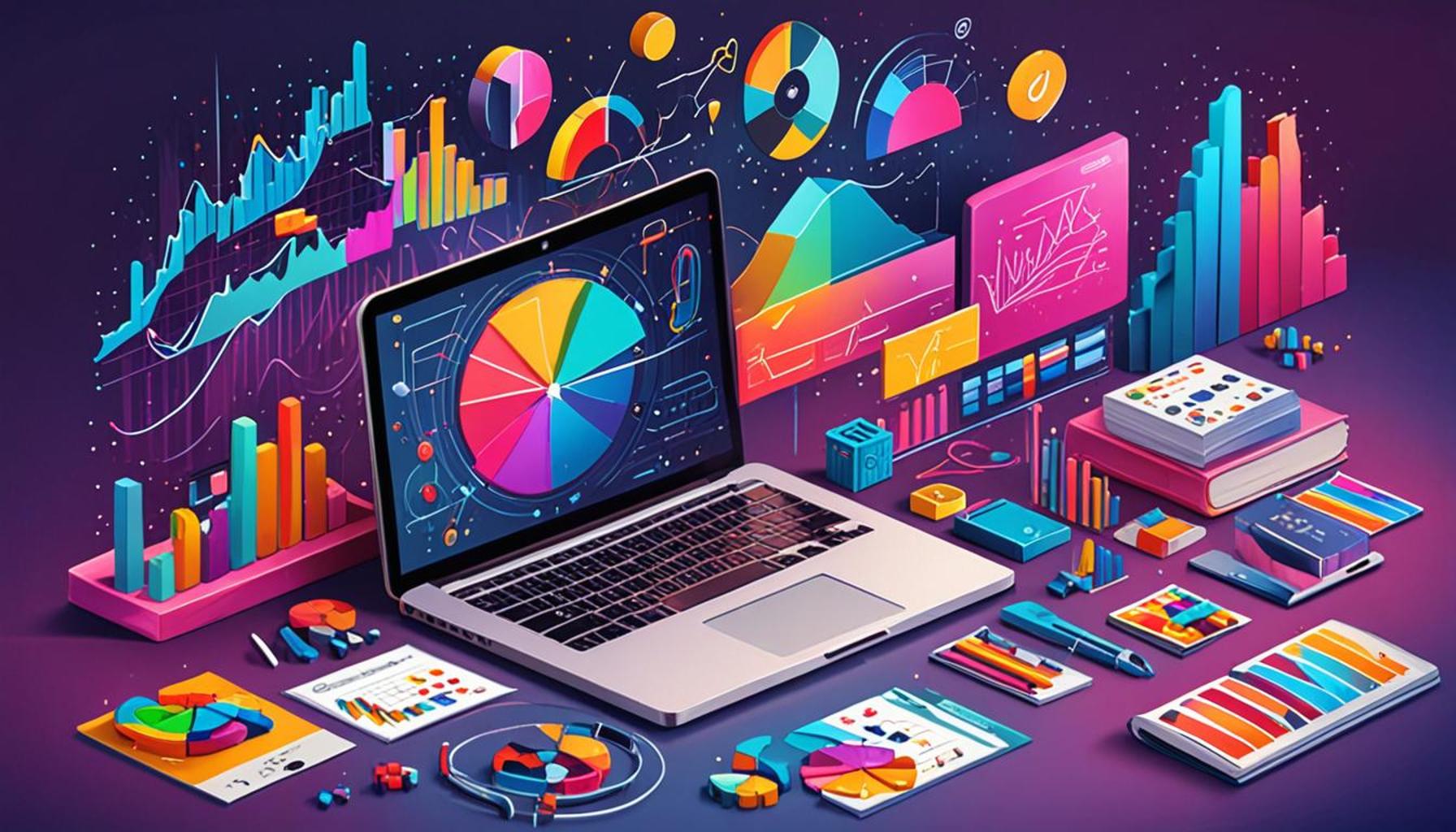How Digital Tools are Facilitating Access to Government Benefits in the USA

Revolutionizing Access to Government Benefits
In an age where technology is deeply integrated into our daily lives, the means by which citizens access government benefits have witnessed a radical transformation. The advent of digital solutions has streamlined processes, making assistance more accessible than ever. For many families navigating economic challenges, these advancements represent a crucial lifeline, enabling them to obtain the support they need with greater ease and efficiency.
Through various digital platforms, individuals can now engage with government services in ways that were once unthinkable. For example, mobile applications and robust websites are facilitating:
- Real-time information regarding available benefits and assistance programs, allowing users to stay updated on eligibility requirements and offerings.
- Online applications that significantly diminish the need for time-consuming in-person visits, thus catering to the needs of those who may not have easy access to transportation.
- Automated eligibility checks that streamline the qualification process, making it easier for users to determine their eligibility for various programs without unnecessary delays.
A few noteworthy examples highlight the successes of these initiatives:
- The Benefits.gov site, which consolidates information about numerous federal assistance programs, serves as a one-stop resource for individuals seeking help with anything from unemployment benefits to housing assistance.
- The P-EBT program was specifically designed for families with children who face food insecurity, providing them essential support during times when schools are closed or in unpredictable circumstances.
- State-specific applications—like those launched in California or New York—allow users to submit and monitor their claims online, providing notifications and updates directly to their smartphones.
As more citizens embrace these digital solutions, a pressing question emerges: how effectively do they serve the needs of the most vulnerable populations in the United States? Studies indicate that while digital access has enhanced outreach, there remains a significant portion of the community—particularly among low-income families, the elderly, and those with limited digital literacy—who still encounter barriers to benefitting from these programs.
The impact of these digital tools is multifaceted. On one hand, they promise increased efficiency and convenience; on the other, they underscore the necessity of ensuring equitable access for all. Future investigations will be vital in assessing not only the efficiency of these platforms but also their role in bridging the gap for the underserved, illuminating pathways to a more inclusive distribution of resources.
RECOMMENDED: Check out this similar article
Embracing Digital Solutions for Efficient Benefit Access
The rise of digital tools has ushered in a new era for accessing government benefits in the United States. Through mobile applications and comprehensive online platforms, users can tap into a wealth of resources with unprecedented ease. By breaking down traditional barriers, these innovations have made it possible for individuals to not only find assistance but to navigate the complex web of government resources with greater agility.
One of the most significant advantages of utilizing digital tools is the facilitation of real-time access to information. Citizens can now explore a broad spectrum of government benefits at their convenience, gaining insights into programs such as food assistance, healthcare coverage, and unemployment benefits. Websites like Benefits.gov serve as invaluable repositories of information, summarizing diverse federal options in an accessible manner. Users can search for benefits using simple keywords, filtering results based on their unique circumstances.
Moreover, the introduction of online applications has revolutionized the application process. In-person visits to government offices often entail long wait times and logistical challenges. With digital platforms, users can apply for benefits from the comfort of their homes. This transition not only saves time but also eases the burden for those with transportation constraints. According to recent data, benefiting from government aid via online applications has increased by over 30% in the past few years, indicating a robust shift towards embracing digital access.
Another crucial feature of these digital tools is the capability for automated eligibility checks. This innovative approach allows potential beneficiaries to quickly ascertain their eligibility for various assistance programs without the need for lengthy paperwork or administrative delays. Automated systems analyze users’ information in real time, offering immediate feedback and guiding them toward programs suited to their needs. This efficiency is a game-changer for individuals grappling with economic distress, ensuring they receive aid without unnecessary delays.
While digital solutions enhance convenience, they also raise valid concerns regarding access equity. For certain demographic groups, including low-income families, the elderly, and individuals lacking digital proficiency, barriers can still hinder participation in essential programs. According to the Pew Research Center, nearly 22% of low-income households in the U.S. do not have reliable internet access, which poses a significant hurdle in fully utilizing these digital tools. Additionally, the rapid evolution of technology can leave behind those who may struggle to keep pace with user interfaces or navigate online systems.
It is imperative for policymakers and government agencies to recognize these disparities and work towards eliminating them. As the landscape of government benefits becomes increasingly digitized, the challenge will lie in ensuring that no demographic group is left behind. A comprehensive approach that includes training programs, community outreach, and user-friendly interfaces is vital to enhance overall engagement with these innovative platforms.
In summary, while digital tools have undoubtedly transformed access to government benefits in the USA, ongoing efforts are needed to ensure that all individuals, regardless of their background, can successfully navigate these resources. The intersection of technology and social support is a promising frontier, but it must be approached with careful consideration of accessibility to truly fulfill its potential.
| Category 1 | Category 2 |
|---|---|
| Increased Accessibility | Digital tools have significantly lowered barriers for vulnerable populations. |
| Time Efficiency | Many services can now be accessed online, reducing waiting times. |
| Streamlined Processes | Online applications simplify interactions with cumbersome paperwork. |
| Enhanced Communication | Immediate updates and notifications keep beneficiaries informed. |
In the realm of government benefits, digital tools are proving to be a game-changer, especially in terms of increased accessibility. Previously, many individuals encountered significant barriers due to physical distances or a lack of resources to navigate complex systems. With the introduction of online platforms and mobile apps, individuals can now seamlessly apply for various benefits such as food assistance, unemployment support, and healthcare.One major advantage is the time efficiency these tools provide. Instead of enduring long queues at government offices or waiting for mail correspondence, people can now fill out applications at their convenience. This not only saves time but also leads to faster processing of benefits.Equally important is the streamlined processes that accompany digital applications. Digital forms eliminate cumbersome paperwork and offer clear instructions, which can be pivotal for those unfamiliar with the system. Furthermore, enhanced communication mechanisms such as notifications and real-time updates allow beneficiaries to stay informed about their application status, making the process more transparent and less stressful.These digital innovations not only ease access but also foster a sense of empowerment among citizens, encouraging them to claim their rights and utilize the benefits available to them.
RECOMMENDED: Check out this similar article
Innovative Approaches to Enhancing Government Benefit Accessibility
The integration of digital tools in accessing government benefits is also driving innovation through data analytics and user feedback mechanisms. Agencies are increasingly utilizing big data to study patterns in benefit application and utilization, which can help identify gaps in service and improve outreach. By analyzing demographics and application trends, governments can tailor their services to fit the specific needs of varied populations, ensuring that programs are more reflective of those they aim to serve.
One notable example is the use of AI (artificial intelligence) in chatbots and virtual assistants. Many government websites now incorporate AI-driven chat functionalities that guide users through the application process, answer frequently asked questions, and provide information on required documents. This feature significantly reduces the uncertainty often associated with filling out applications. For instance, the state of California introduced an AI-powered chatbot on its health benefits platform aimed at helping residents navigate the complex eligibility requirements for Medi-Cal and Covered California.
In addition to AI, some states have adopted mobile applications specifically designed for benefits management. Programs like MyBenefits CalWIN in California allow users to check their application status, renew benefits, and communicate directly with case workers from their smartphones. This enhances user engagement and allows for a more dynamic interaction with the benefits system, making it more user-friendly. These apps can also send push notifications to remind users of deadlines or schedule appointments, thereby further ensuring that individuals do not miss out on critical assistance.
Moreover, community-based organizations are leveraging digital tools to bridge the gap between technology and those who may feel left behind. By offering digital literacy workshops and ensuring devices are available, these organizations are empowering citizens to take full advantage of the resources available to them. Programs that teach families how to use their smartphones or computers effectively can significantly increase their confidence in managing government benefits online. For instance, initiatives led by organizations such as the National Association of State Chief Information Officers (NASCIO) promote partnerships with nonprofits to enhance digital literacy, aimed at vulnerable populations.
Furthermore, governments are increasingly embracing transparency through digital dashboards that track program performance and benefit distribution. For example, the United States Digital Service has made substantial efforts to streamline and digitize the application processes for major social welfare programs such as SNAP (Supplemental Nutrition Assistance Program). The creation of performance metrics not only holds agencies accountable but also helps the public stay informed about where resources are allocated and how effectively they are serving those in need.
Lastly, financial technology (fintech) developments also play a crucial role in the landscape of accessibility to government benefits. Services that allow direct payment deposits or instant fund transfers directly into recipients’ bank accounts help eliminate delays. For low-income families relying on benefits to cover immediate living expenses, such swift transactions can be life-changing. The advent of mobile payment systems has further enabled beneficiaries to manage their finances better and access funds more efficiently when critical circumstances arise.
As the use of digital tools continues to proliferate, the goal remains clear: to create a more inclusive framework that provides every citizen, regardless of technological proficiency or financial stability, with equal access to government benefits. While much progress has been made, the ongoing evolution of these tools requires continual improvement and adaptation to the needs of the community they serve.
RECOMMENDED: Check out this similar article
Conclusion
The ongoing transformation brought about by digital tools is reshaping the landscape of government benefits access in the USA. Through the innovative use of big data, AI, and mobile applications, citizens are experiencing a more streamlined and user-friendly process that meets their diverse needs. Not only are these digital advancements simplifying application procedures, but they are also empowering individuals with real-time information about their benefits, crucial for making informed decisions.
Furthermore, the emphasis on digital literacy initiatives is highlighting the importance of inclusiveness in this digital shift. By equipping vulnerable populations with necessary skills, community organizations are bridging the digital divide, enabling broader participation in government programs. This collaborative effort ensures that no one is left behind as technology continues to evolve.
Government transparency is enhanced through digital dashboards, fostering trust and accountability. As agencies track performance metrics and resource allocation, citizens are better informed about the efficacy and reach of assistance programs. Additionally, financial innovations, such as direct payment systems, are revolutionizing how benefits are delivered, ensuring that much-needed support reaches those who rely on it quickly and efficiently.
In conclusion, while the advances in digital tools represent significant progress toward a more accessible government benefits system, it is essential to focus on continuous adaptation and improvement. By remaining responsive to the needs of all populations, the ever-evolving digital landscape can truly fulfill its promise of equitable access to government support in the USA. This journey of digital transformation calls for ongoing engagement, innovation, and a commitment to serving every citizen.


